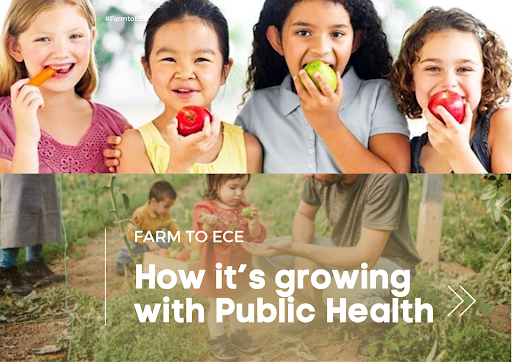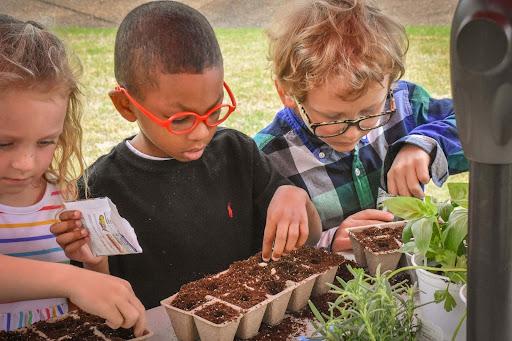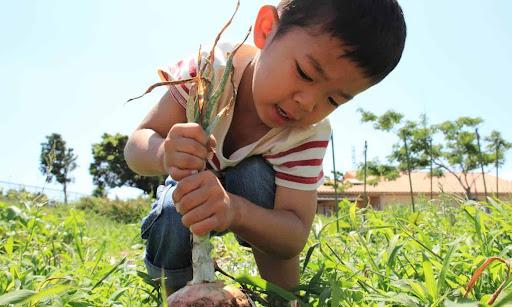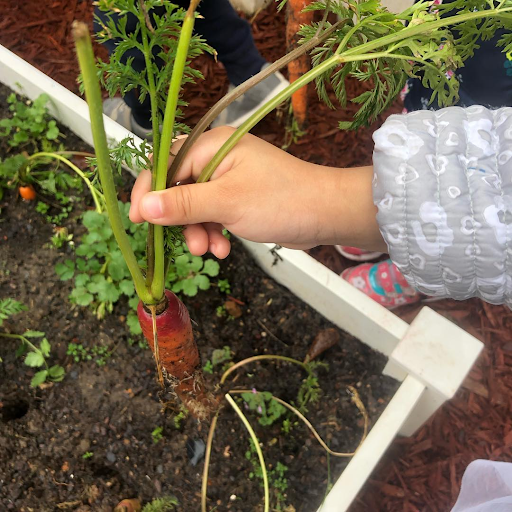Farm to ECE: How it's growing with Public Health
November 28, 2023 - Yarieliz G. Rodríguez Feliciano, ASPHN Fellow 2023 University of Puerto Rico - Medical Sciences Campus, with contributions from Meagan K. Shedd, PhD Center for Regional Food Systems

“Farm to school enriches the connection communities have with fresh, healthy food and local food producers by changing food purchasing and education practices at schools and early care and education settings.”2National Farm to School Network
Public health is the science and study of protecting and improving the health of families and communities. This can be done by promoting healthy lifestyles, research, prevention, and actively responding to situations to protect and promote the health of all people in all communities. One way to help do this was the creation of the 10 Essential Public Health Services.

FARM TO ECE
Farm to early care and education (ECE) has been part of public health for a long time. Equally important, many ECEs have been implementing farm to ECE but may not call it that. Farm to ECE offers increased access to the three core elements of local food sourcing, gardens, and food and agriculture education to enhance the quality of the educational experience in all types of ECE settings.4 It’s an excellent way to promote overall eating habits in early childhood, such as encouraging and supporting nutrient-dense eating and overall nutrition practices that will last a lifetime. Not only that, but it impacts families, farmers, and communities as well. Farm to ECE encourages:
- Health and Wellness
- Experiential Learning
- Family and Community Engagement5
Farm to ECE provides children in the ECE setting the following benefits, according to the National Farm to School Network:
- Increased access to healthy, regionally produced foods through local purchasing.
- Opportunities for hands-on gardening experience.
- Nutrition, food, and agricultural education.
IMPORTANCE OF EARLY CHILDHOOD EDUCATION
Early childhood education provides the foundation for lifelong learning and its benefits. Moreover, healthy growth is related to different aspects in those first years of life. Early care and education providers know first-hand that children learn best when they are actively engaged. ECEs can support that learning by providing the tools for that active learning, and farm to ECE is one way to do that. It also is a way of promoting public health too.
ADVANCING HEALTH EQUITY THROUGH
FARM TO ECE
Healthy People 2030 defines health equity as “the attainment of the highest level of health for all people. Achieving health equity requires valuing everyone equally with focused and ongoing societal efforts to address avoidable inequalities, historical and contemporary injustices, and the elimination of health and health care disparities.”6 Farm to ECE opportunities may be one approach to addressing health and education inequities by increasing access to healthy, local foods and high-quality education opportunities for children and communities while promoting ECE policies that address inequality. Farm to ECE can help address inequities in the food system by changing ECE purchasing practices and policies. The Child and Adult Care Food Program (CACFP) and Michigan’s 10 Cents a Meal for Michigan Kids & Farms are programs that support the efforts of Farm to ECE. CACFP contributes to the wellness, healthy growth, and development of young children and adults through the reimbursement of nutritious meals and snacks.7 Additionally, 10 Cents a Meal directly provides ECE settings an incentive to support purchases of Michigan grown food.8 Both of these programs help support Farm to ECE efforts, while incentivizing the purchase of farm fresh produce and nutritious foods which allows direct access for children.

WHY SHOULD WE CARE
“At a time when many people have become increasingly detached from nature and their food sources, what better than now to learn and teach our children about the benefits of farming and the value of food?”10
It’s time now more than ever to push teaching of the importance of having accessible and nutrient-dense food sources. AND THAT STARTS IN EARLY CARE AND EDUCATION! We need to invest the time to learn better ways, so that our children can grow up already appreciating fresh fruit and veggies. We want our children to grow up happy, healthy, and to keep good habits throughout their adult life.
REMEMBER: It’s not the same thing to see a veggie in a plastic bag in their lunch box, when compared to having the chance to get tiny hands in rich fertile earth, pulling a carrot out of the ground to snack on later.

GET INVOLVED WITH FARM TO SCHOOL IN YOUR COMMUNITY
If you’re wondering how to become involved in Farm to ECE, here are some ideas to get started:
- Start your very own home garden, or start it in your workplace!
- Do a taste test or feature a local item that is in season!
- Take a trip to a local farmer’s product, and purchase products from local sources!
- Cook with seasonal products as much as possible!10
SPREAD THE WORD
We’d love for you to share the way you participate in Farm to ECE!
Follow @letstalkhealth_pr & @farmtoschool on Instagram, and join the movement using the hashtags #letstalkhealth_pr #farmtoschool #F2SMonth.
References:
- CACFP-nutritious meals and snacks. Today’s Child Learning Center. (n.d.). https://www.todayschild.us/apps/pages/index.jsp?uREC_ID=3405974&type=d&pREC_ID=2383483
- October is Farm to school month!. Farm To School. (n.d.). https://www.farmtoschool.org/
- Whole Kids Foundation. (2020, April). A good time for home gardening with kids. Whole Kids Blog. https://www.wholekidsfoundation.org/blog/gardening-with-kids/
- About farm to early care and Education. About. (n.d.). https://www.farmtoschool.org/our-work/early-care-and-education
- Centers for Disease Control and Prevention. (2023, February 28). CDC - examples of how the SDOH can be addressed through the 10 Ephs - Public Health Infrastructure Center. Centers for Disease Control and Prevention. https://www.cdc.gov/publichealthgateway/sdoh/Ten-Essential-Services-SDOH.html
- Office of Disease Prevention and Health Promotion. (n.d.). Health equity in healthy people 2030. Health Equity in Healthy People 2030 - Healthy People 2030. https://health.gov/healthypeople/priority-areas/health-equity-healthy-people-2030
- Child and adult care food program. Food and Nutrition Service U.S. Department of Agriculture. (n.d.). https://www.fns.usda.gov/cacfp
- Ten cents a meal for Michigan’s Kids & Farms. Ten Cents a Meal for Michigan’s Kids & Farms. (n.d.). https://www.tencentsmichigan.org/
- Campos, D., Seeley, E., Garbacz, A., Greene, L., Hurtado, C., Smith, I. M., Uriarte, A., Wright, N., Larson, C., & Nierenberg, D. (2018, October 9). 30 Innovative Farm-to-school programs from across the Globe. Food Tank. https://foodtank.com/news/2018/10/national-farm-to-school-month-highlighting-30-innovative-programs-from-across-the-globe/
- National Farm to School Network. (n.d.). F2SM 2023 fact sheet - assets.website-files.com. Farm to School. https://assets.website-files.com/5c469df2395cd53c3d913b2d/64f119d1088048bd2b8f004c_F2SM%202023%20Fact%20Sheet%20(1).pdf



 Print
Print Email
Email




